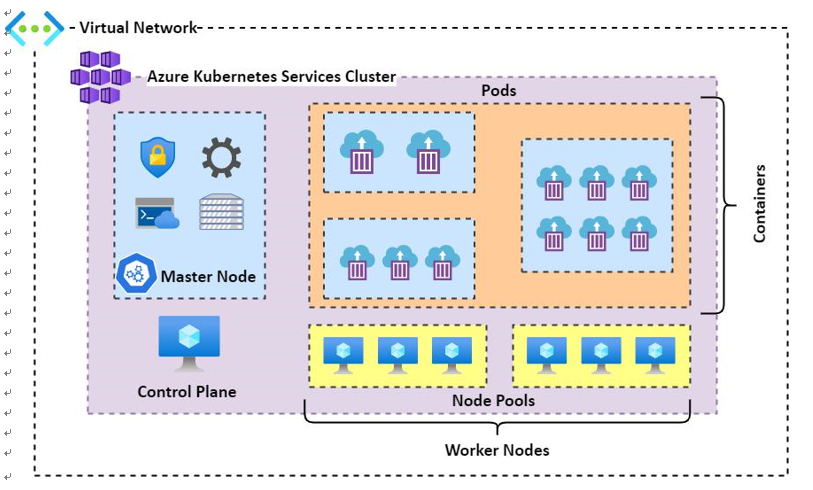AKS
Kubernetes is designed as a management and orchestration service to assist with managing containers and creating a mechanism for scale. AKS is a serverless implementation of the Kubernetes service, which minimizes the management of the Kubernetes cluster for us. The service is designed so that you just take care of the agent nodes. Azure builds upon Kubernetes by enhancing some of its default implementations to enable functions, such as the following:
- Identity and Access Management (IAM): Identity is integrated into Azure Active Directory (Azure AD) and managed or the system identity can be used on the service.
- Azure VNet integration: Enable private networking natively to Azure networks, network security groups (NSGs), and even network policies.
- Persistent storage: Azure overcomes the ephemeral-based storage native to containers by enabling easy integration of persistent storage mechanisms such as Azure File Shares.
- Autoscaling: This function enables the autoscalingof Pods and clusters.
AKS also enables health monitoring for the service and the coordination of upgrades. As part of the service, master nodes are not billed for and are included for free, but all agent nodes are billed for. The service constitutes master nodes, node pools, Pods, networks, and storage. It’s important to understand how all these components function together. The control plane component of the service contains all the functions that allow you to administer your containers within AKS as well as the master node, which is the orchestrator service within AKS. Node pools are essentially your VM infrastructure and are used to provide resources for your Pods and, by association, containers for the service. Then, Pods are your collections of containers within AKS where containers are grouped into their respective functions or applications. The following diagram illustrates the relationship between these various components:

Figure 11.21 – AKS structure
Now that you are more familiar with containers and the orchestration tools that we can use such as AKS, let’s dive into some exercises to give you some hands-on experience of working with these services.
